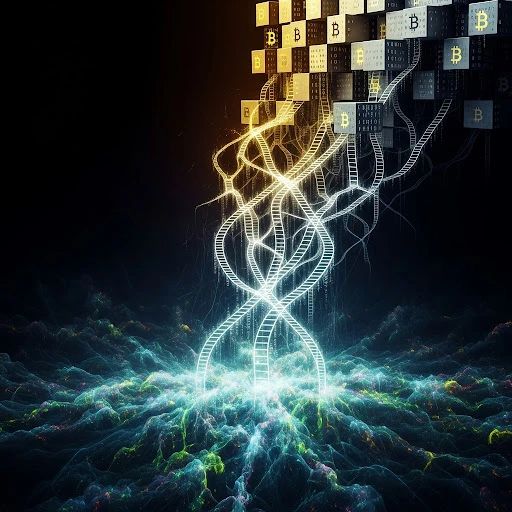
Traditional definitions—such as digital currency or distributed database—fail to reveal its profound revolutionary nature in computational science. This paper argues that Bitcoin is not a classical Turing Machine, but rather the first large-scale engineering realization of the “Ordinal Logic System” envisioned by Alan Turing in his 1939 paper. This system is composed of multiple deterministic Turing Machine components, but through an emergence mechanism isomorphic to quantum mechanics, its overall behavior manifests as a non-deterministic, irreducible “non-Turing Machine.” This paper reveals its internal recursive logical architecture, its structural isomorphism with NP asymmetry, and ultimately points out that Bitcoin’s determinism is a macroscopic illusion arising from underlying indeterminacy.
The core of Bitcoin is not a single program, but a recursive architecture of successive layers that solve and leave behind problems. Each layer acts as a formal system, resolving the open problem of the layer below while generating new, higher-dimensional problems that it itself cannot solve.
Layer I: UTXO Transaction System (Formal System I)
This system perfectly defines the local business logic of asset transfers. However, it cannot perceive the global state, thus leaving behind the fundamental double-spending problem.
Layer II: Block Generation System (Formal System II)
This system solves the double-spending problem by linearly ordering transactions and packaging them into a chain. But in a distributed environment, it produces its own unresolved problem: forks.
Layer III: Consensus Oracle System (Ordinal Logic Core)
This system introduces an “oracle” from the physical world—Proof of Work (PoW), representing energy and time. Through the “longest chain rule,” it resolves the fork problem. Its operation is no longer purely logical deduction, but an inductive judgment grounded in physical reality.
How does Bitcoin emerge as a non-Turing Machine system from deterministic components? The answer is isomorphic to the asymmetric structure of NP problems and the inner principles of quantum mechanics.
The system’s functioning can be divided into process and result:
Process: NP-hard (hard to solve)
The search for a valid nonce is carried out by billions of computing units (degrees-of-freedom particles) across the network, in parallel, unordered, and probabilistic resonance. This time-path is non-deterministic and irreducible. It is like photons propagating through space, with their underlying quantum paths in superposition, unpredictable by classical algorithms. This is the “resonance of degrees-of-freedom particles.”
Result: P-verifiable (easy to verify)
Once resonance produces an outcome—a mined block and the longest chain—any node can verify its validity in polynomial time. At the macro level, this result presents as a single, deterministic state, just like the straight-line trajectory we ultimately observe in light propagation.
Bitcoin’s consensus and security are built precisely on this deep asymmetric tension between “non-deterministic process” and “deterministic appearance of results.” It is not a system performing deterministic computation through time, but one that continuously emerges macroscopic order from probabilistic microscopic paths.
Here we uncover two fundamentally different computational paradigms:
Formal System: Its time path is deterministic and fully reproducible. Given an initial state, every step and final result are unique and computable.
Emergent System (Bitcoin/Quantum System): Its time path is based on the non-deterministic evolution of free particles, and the process itself is irreducible. It is not computing a deterministic result, but “discovering” a stable state within a vast space of possibilities—one validated by probability and physical reality.
Thus, when breaking Bitcoin into its four components (UTXO, Block, Timestamp, Nonce), each individually fits the deterministic characteristics of a Turing Machine. But their combination—especially the nonce collisions and timestamp generation simulating quantum emergence—turns the whole into an “evolutionary algorithm” rather than a “deterministic algorithm.”
The unshakable “determinism” of Bitcoin’s longest chain is, ontologically, a macroscopic illusion. Since its time-path originates from probabilistic indeterminacy, its result must also be probabilistic. What we call “consensus” is an extremely stable macroscopic state formed by the accumulation of probabilistic advantage over time—not a logically infallible truth.
Ultimately, we may conclude: Bitcoin is the physical embodiment of Turing’s idea of an “Ordinal Logic System.” It ingeniously uses deterministic computational rules as a foundation to construct a quantum-emergence-like engine, thereby generating a new form of computational life rooted in the physical world—its security and vitality deriving precisely from its underlying indeterminacy.